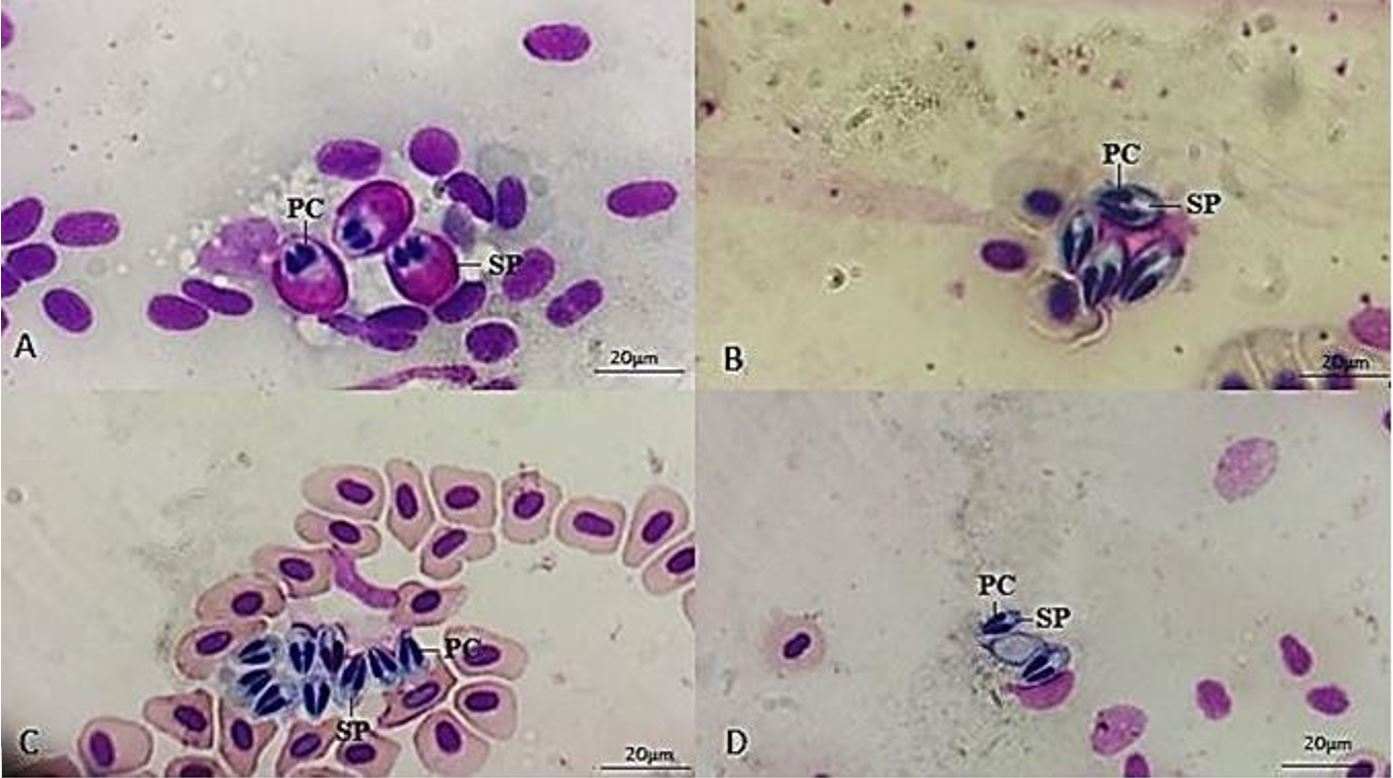Abstract
Myxosporidiosis is an infectious disease caused by myxozoans of the Phylum Cnidaria, Class Myxosporea, and Order Bivalvulida, considered a common parasite in fresh and saltwater fishes that parasitize many organs, especially gills. In the present study, 49 specimens of fishes belonging to eight genera: Tetragonopterus, Leporinus, Myleus, Pirinampus, Rhapiodon, Pygocentrus, Ageneiosus, and Serrasalmus were collected and blood smears were made, fixed with absolute methanol, and stained with Giemsa 10% to survey hemoparasites. However, myxospores were found in the circulating blood of five (10.20%) fishes belonging to genus Tetragonopterus, Myleus, and Pygocentrus. Two morphological types of Myxobolus spp. were identified in all the five fish specimens analyzed. Usually, investigations on myxozoans in fish are carried out with the search for plasmodia or cysts in the fish organs and observation of the cavity of organs. Nevertheless, this study highlights the importance of also examining the blood of these animals, since these parasites can cause severe pathogenic diseases in fish. Thus, the blood analyses can proportionate preventive sanitary control for commercial fish avoiding economic loss.
Keywords:
Morphology; Myleus; Pygocentrus; Tetragonopterus; occurrence

 Thumbnail
Thumbnail
